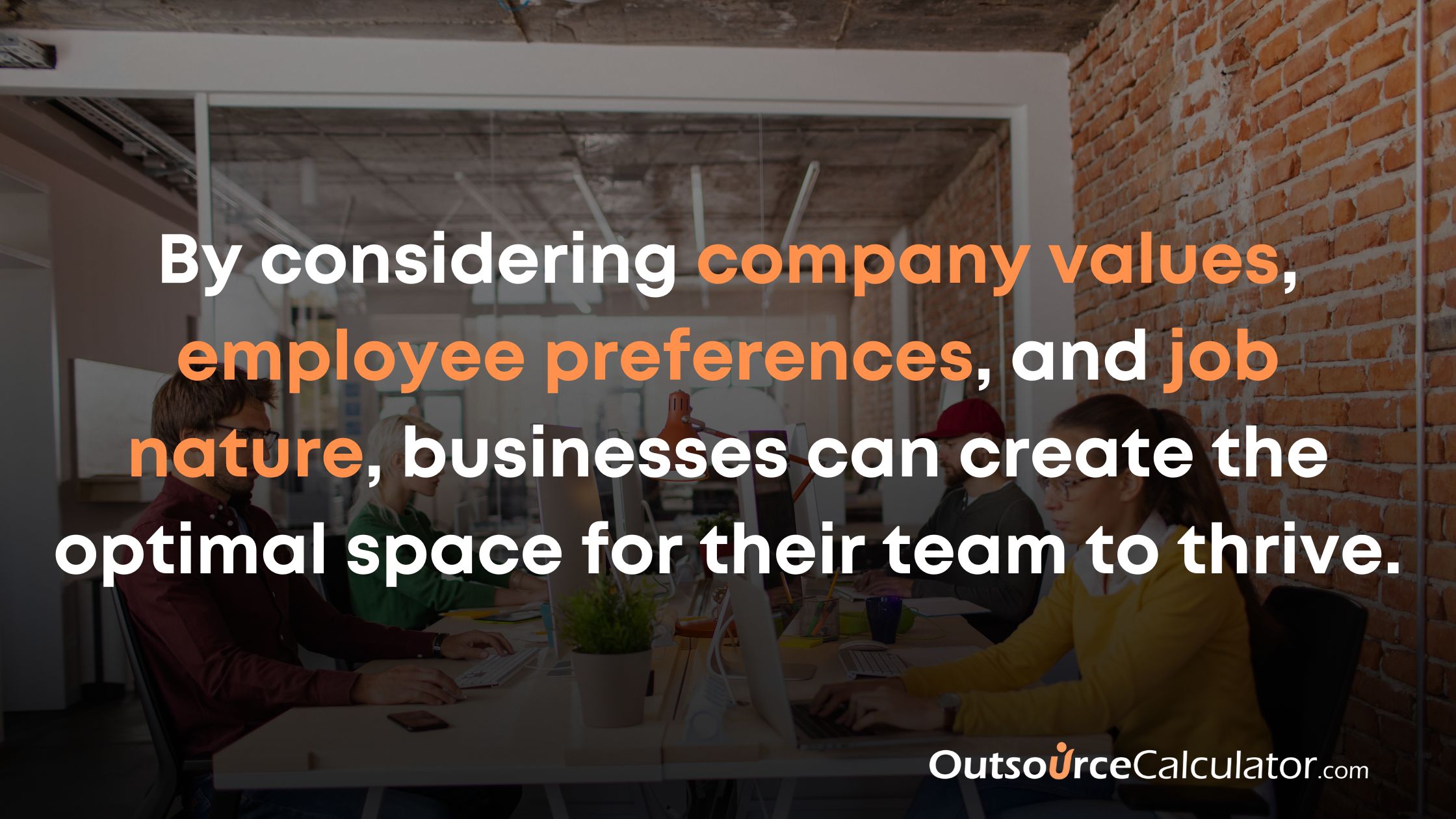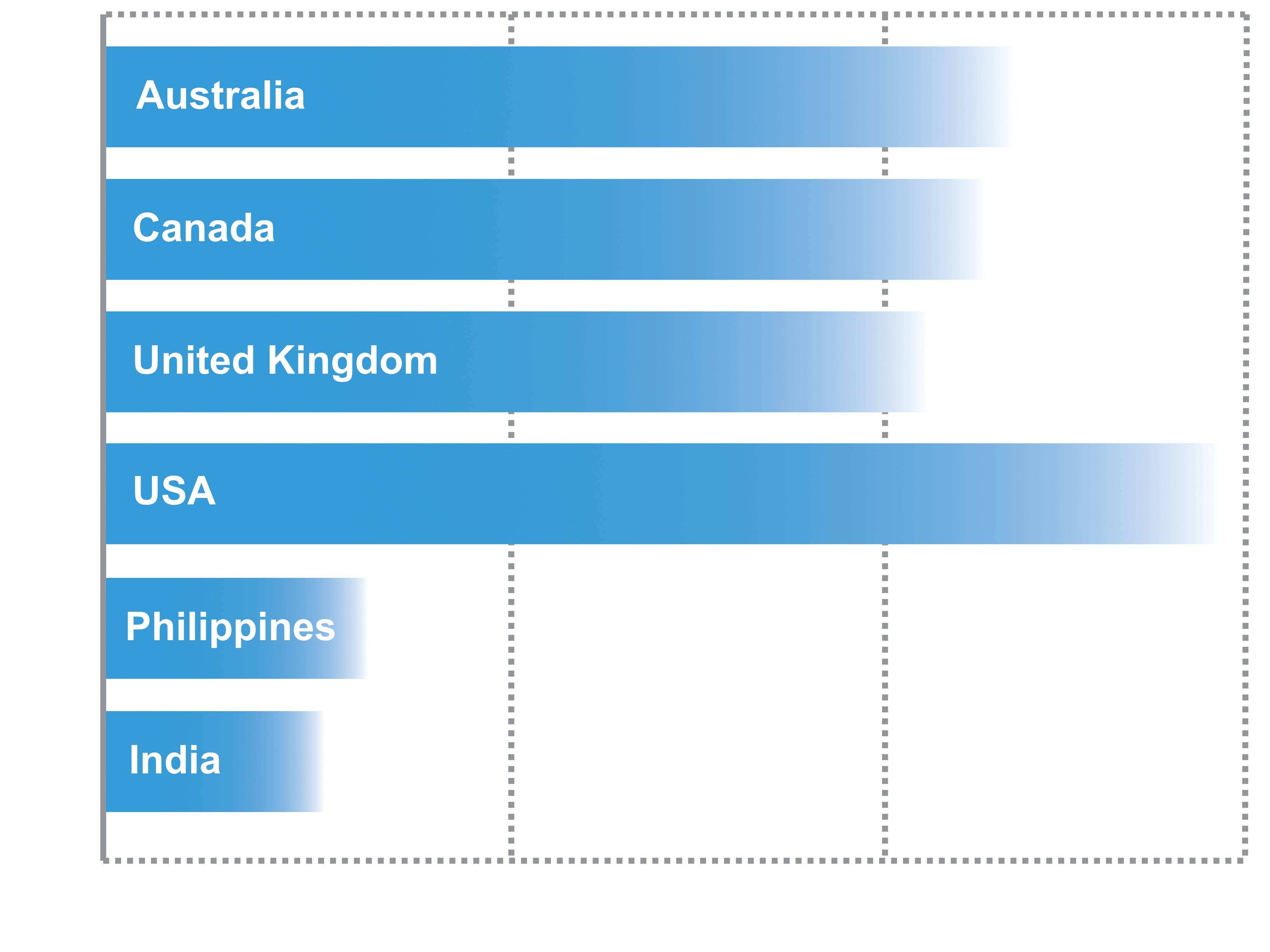
Choosing the right work environment is crucial for employee satisfaction and business success. Each organization has a unique work culture, and understanding the different work environments can help employees and employers align their goals and values for improved productivity and morale.
Types of Work Environment
1. Traditional Work Environment
This environment typically involves a physical office where employees follow a structured schedule. It's characterized by hierarchical management, set working hours, and a clear division of roles.
2. Remote Work Environment
With the rise of digital tools, many companies allow employees to work from anywhere. A remote work environment focuses on flexibility, relying heavily on technology to connect teams.
3. Flexible Work Environment
This environment combines both remote and in-office work, giving employees the freedom to choose where they work. Flexible work environments promote work-life balance and adaptability.
4. Creative Work Environment
A creative work environment encourages innovation and idea generation. Often found in industries like advertising and design, these spaces are dynamic, with fewer rigid structures and more collaborative freedom.
5. Collaborative Work Environment
In a collaborative work environment, teamwork is key. Companies in this environment value open communication, shared goals, and problem-solving through team effort. It is common in sectors like tech and project management.
6. Competitive Work Environment
This environment thrives on performance and individual achievements. Employees are motivated by rewards, promotions, or incentives based on their results, making it common in sales and finance industries.
Ways to Create a Positive Work Environment
Encourage Open Communication
A healthy work environment fosters transparency and open communication between employees and management. Regular check-ins, feedback sessions, and town halls are great ways to ensure everyone’s voice is heard.
Promote Work-Life Balance
By allowing flexible hours, encouraging remote work, or providing mental health days, companies can ensure that employees maintain a healthy balance between their professional and personal lives.
Recognize and Reward Achievements
Recognizing and rewarding employees' achievements can increase morale and motivation. Whether through formal recognition programs or simple shout-outs in meetings, appreciation goes a long way in maintaining a positive environment.
Create a Collaborative Atmosphere
Design spaces that encourage teamwork, whether through open office plans, shared project tools, or team-building activities. Collaboration helps build stronger relationships and can increase innovation.
Ensure a Safe and Comfortable Workspace
A positive work environment also includes physical safety and comfort. Ensure that office equipment is ergonomic, the workspace is well-lit, and health and safety regulations are followed.
Factors to Consider When Selecting a Work Environment
Company Values
The work environment should align with the core values and mission of the company. Employees are more productive and satisfied when their workplace supports their personal and professional goals.
Industry Type
Different industries tend to lean towards certain work environments. For instance, tech companies might embrace flexible or remote environments, while manufacturing may require a traditional setting.
Employee Preferences
Understanding what kind of work environment employees prefer is essential. Some may thrive in collaborative spaces, while others may prefer working alone in a remote setting.
Nature of the Job
The type of work being performed plays a significant role in the environment chosen. Jobs that require creativity, for example, benefit from open, unstructured spaces, while highly regulated industries may need a more traditional setup.
Company Size
Smaller companies may opt for a more flexible or casual work environment, while larger organizations with hundreds of employees may benefit from more structure.

Conclusion
Selecting the right type of work environment and cultivating a positive workspace is key to boosting productivity, fostering creativity, and maintaining employee satisfaction. Companies that prioritize their work environment will see enhanced employee performance and overall business success. By considering company values, employee preferences, and job nature, businesses can create the optimal space for their team to thrive.
Compute potential savings for your remote staff and virtual team member
Build Your Global Team and Save up to 70% on Labor Cost.
Recent Articles
About Outsource Calculator
Outsource Calculator helps boost your profits, increases quality and efficiency, and allows your business to scale quickly without expensive overhead.
Empowering
Get a FREE Quote & Save 70% on Labor costs!
The Outsource Calculator estimates the savings from outsourced staffing solutions compared to hiring locally, which is intended for informational purposes only. It provides approximate pricing only may not be accurate and should only be used as a guide and is not an official quote. You should not make any decisions based simply on the information provided. Outsource Calculator pricing is based on the typical employee salaries for each role, including all employee payroll taxes, government-mandated employee costs, employee technology required, office space, hardware costs, IT support, recruiting, training, onboarding, and all HR functions which provide a more accurate comparison with the outsourced staffing compared to local hiring.
United States
United Kingdom
Australia
Canada
Europe
Copyright © 2025 OutsourceCalculator.com All rights reserved. Privacy Policy Terms of Use




